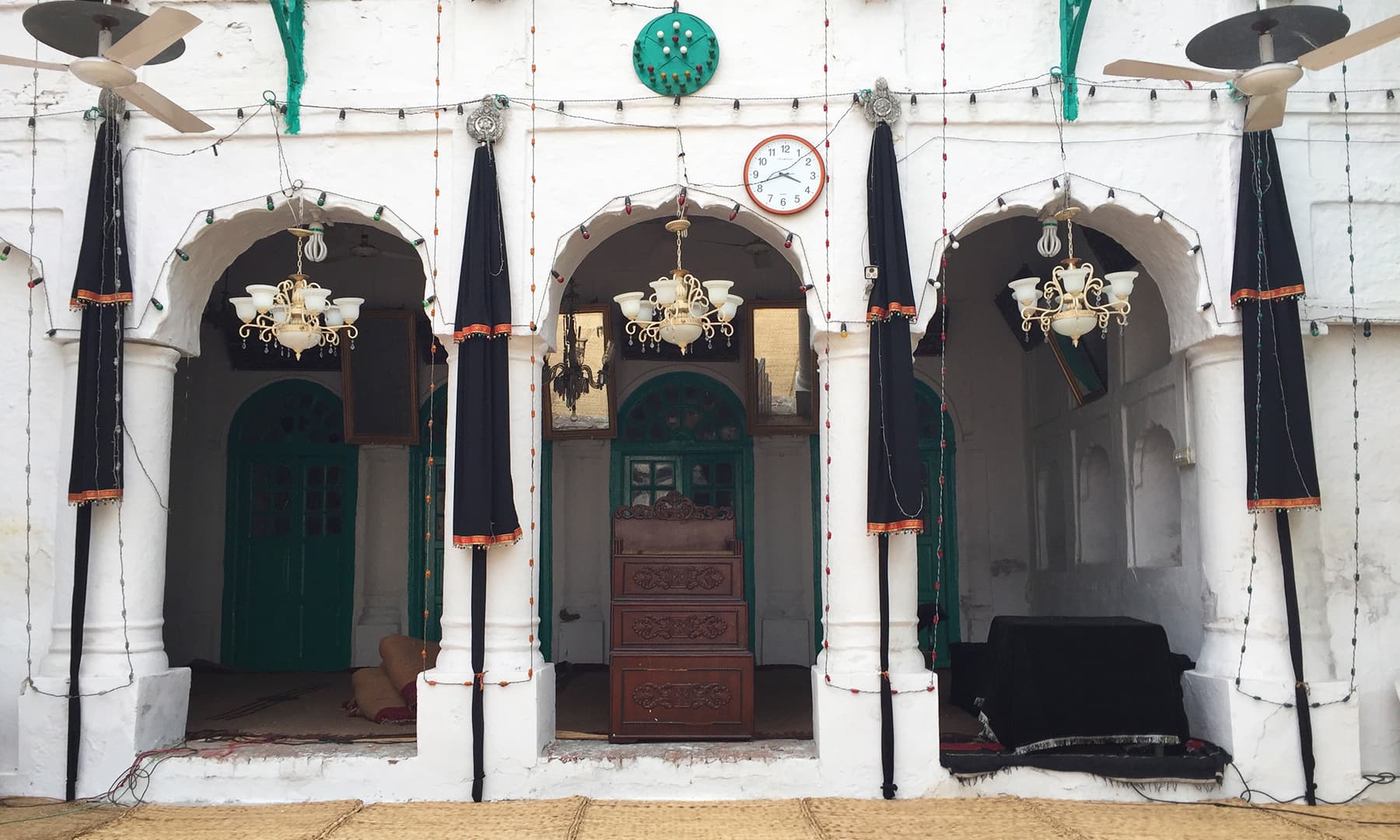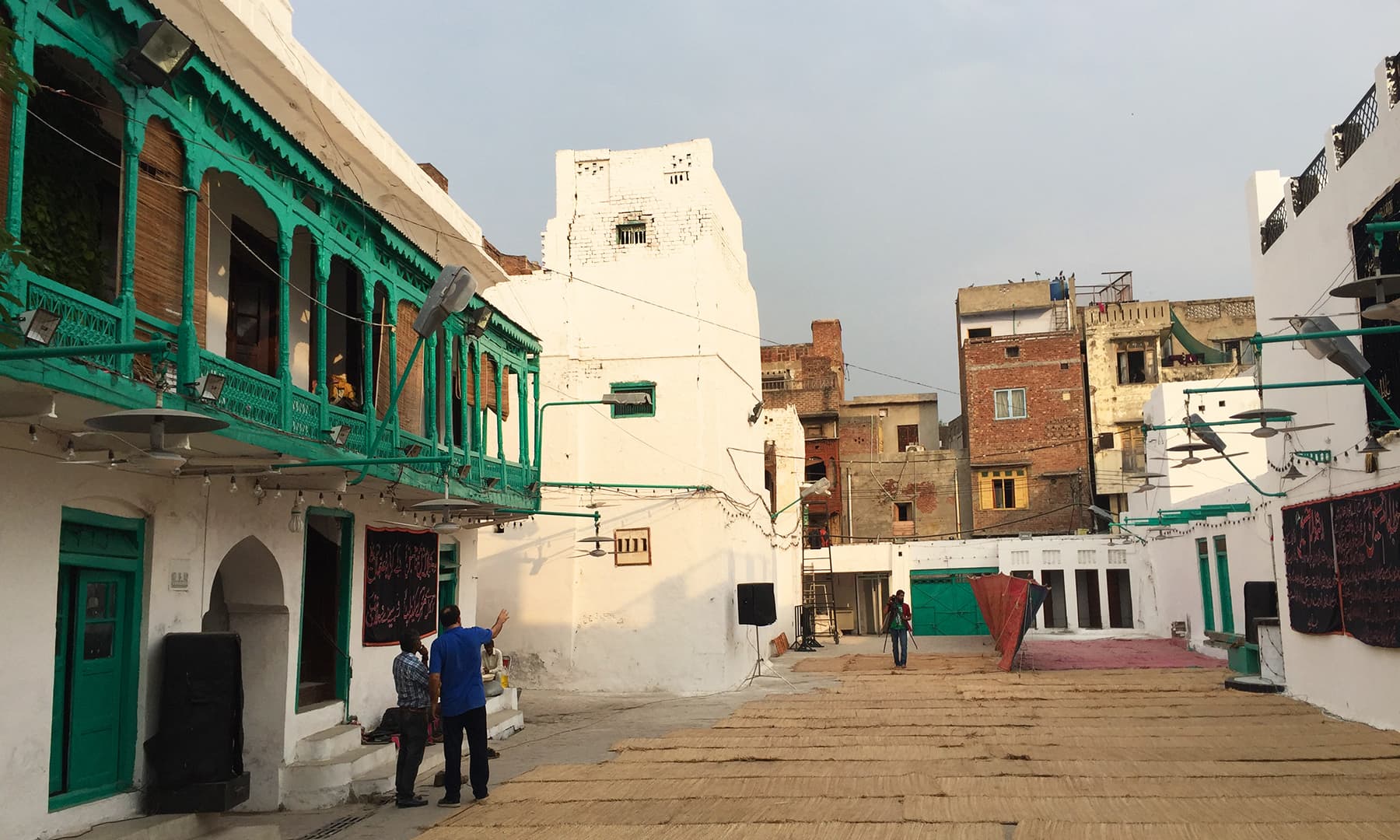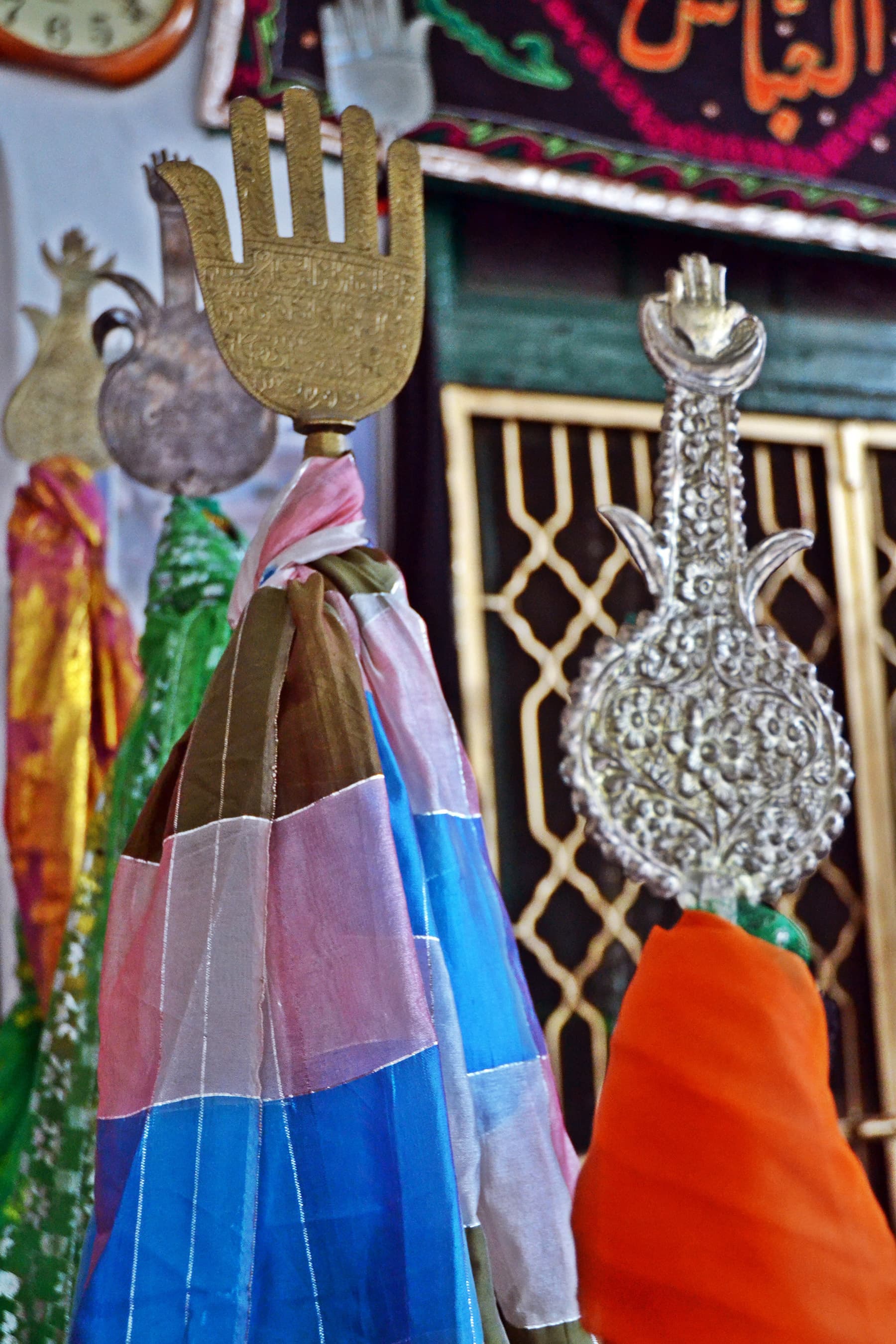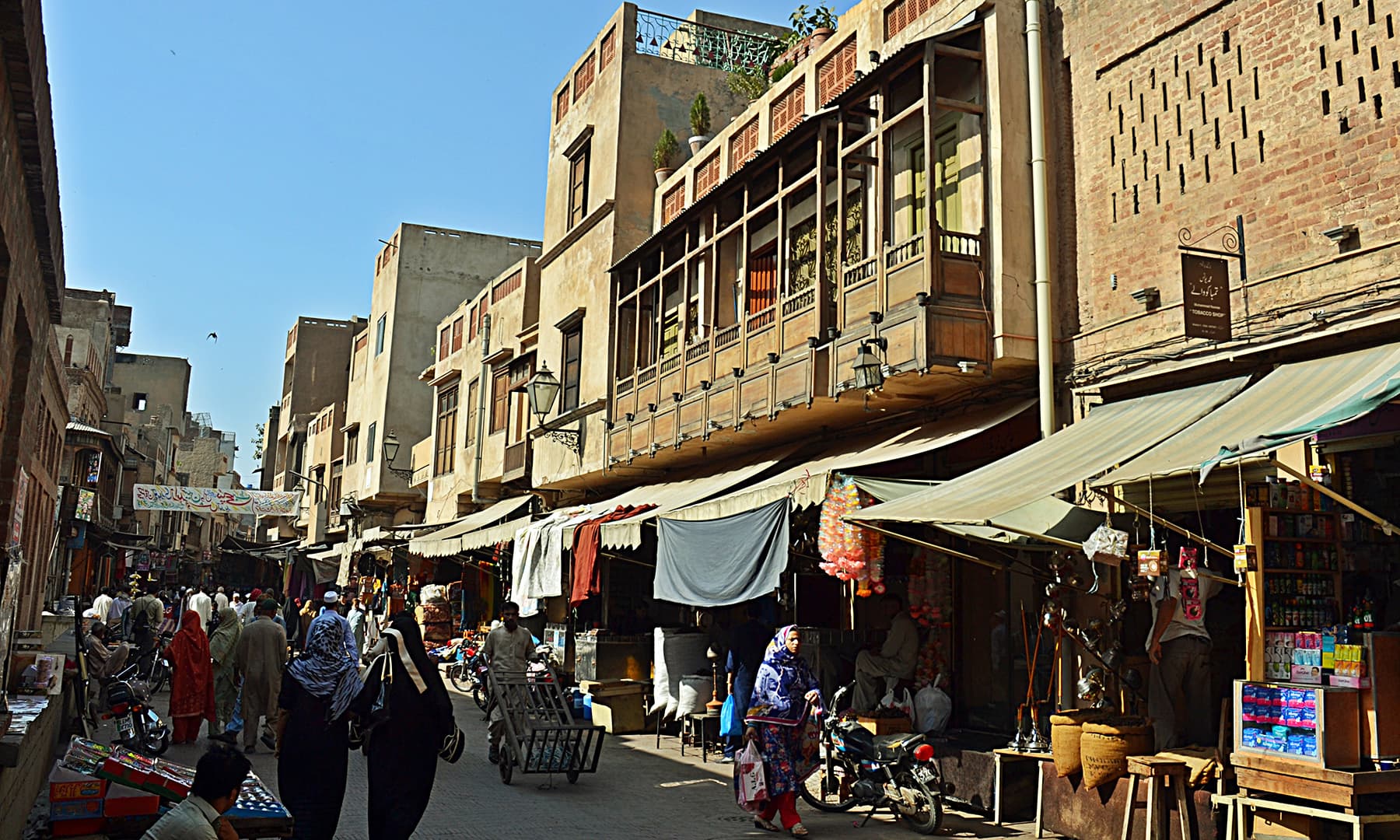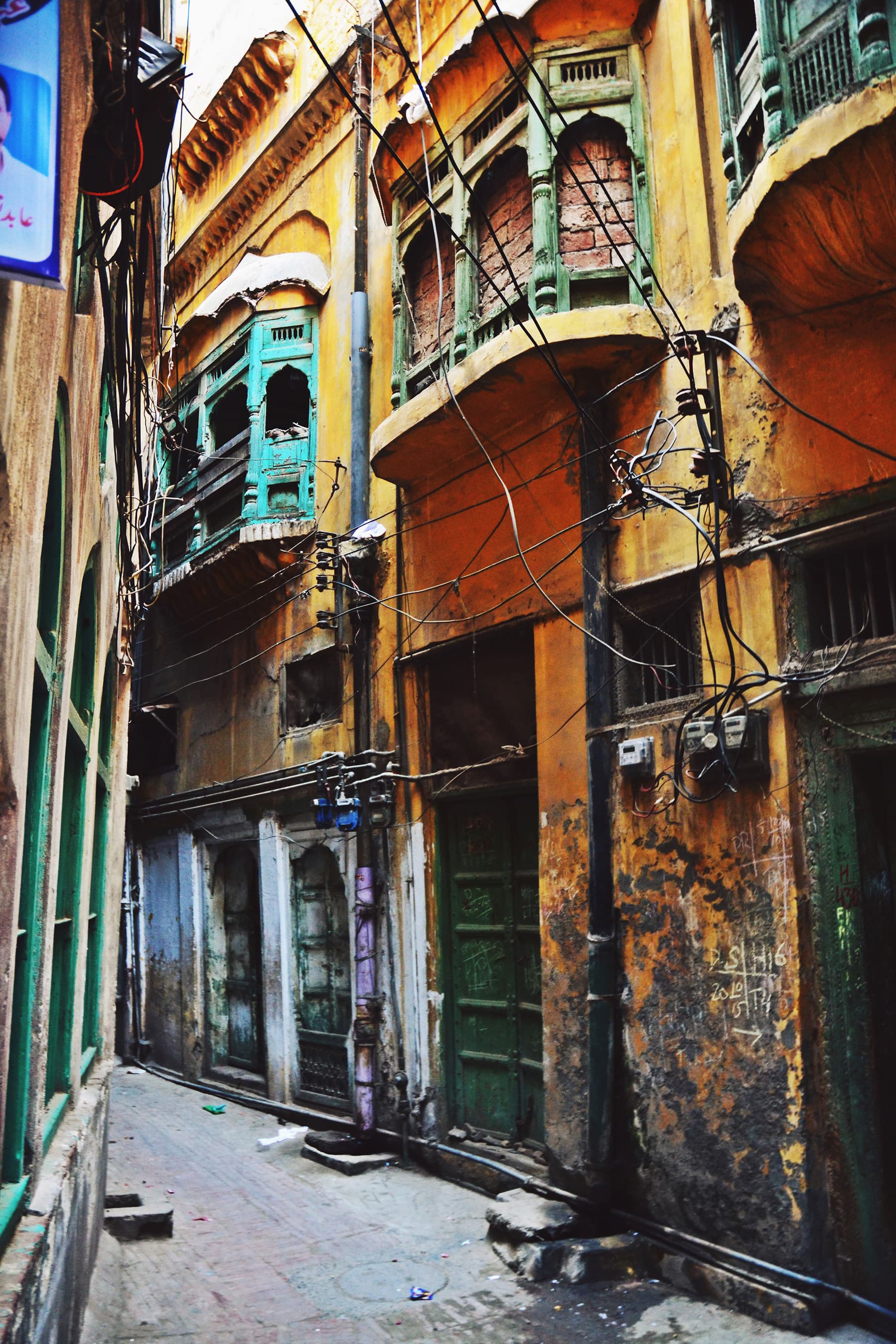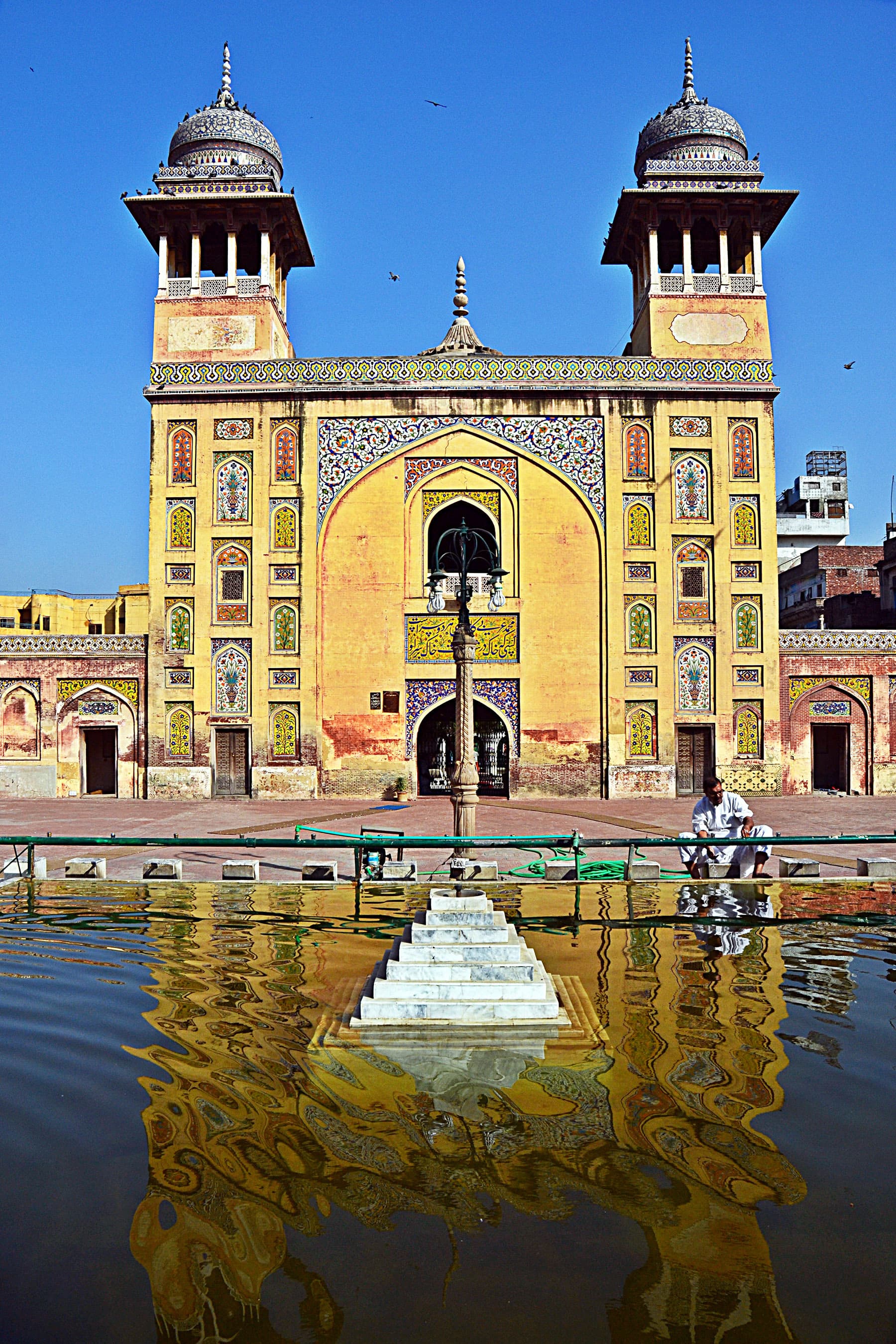Zibago
ELITE MEMBER

- Joined
- Feb 21, 2012
- Messages
- 37,002
- Reaction score
- 12
- Country
- Location
Mourning in the ancient imambargahs of Lahore
TAIMUR SHAMIL — UPDATED ABOUT 19 HOURS AGO
Lahore, one of the most flamboyant and pulsating cities of Pakistan, hosts a few iconic buildings of Shia Islam. Nestled in the midst of the walled city's network of narrow and bustling streets are the old and distinctive imambargahs: Nisar haveli, Mubarak haveli and Maatam Siraai.
In search of these imambargahs, I entered the vibrant and crowded street of Mochi gate, leading to 'Mohallah Shia’an Kashmirian'. The area is known for its imambargahs and Shia community and culture.
The streets are lined with shops displaying alams and shabeehs (pictures) of Shia Imams. Dressed in black, men, women and children can be seen going to these many imambargahs and places for majalis.
The clanging of big sabeel cauldrons is heard at every corner, where flavoured milk and sherbets are served round the clock. These sabeels are decorated with flowers and alams to mark the occasion.

Mochi gate entrance. —Taimur Shamil

Balconies with wooden work in Mohalla Shian Kashmirian. —Photo by Abdullah Khan
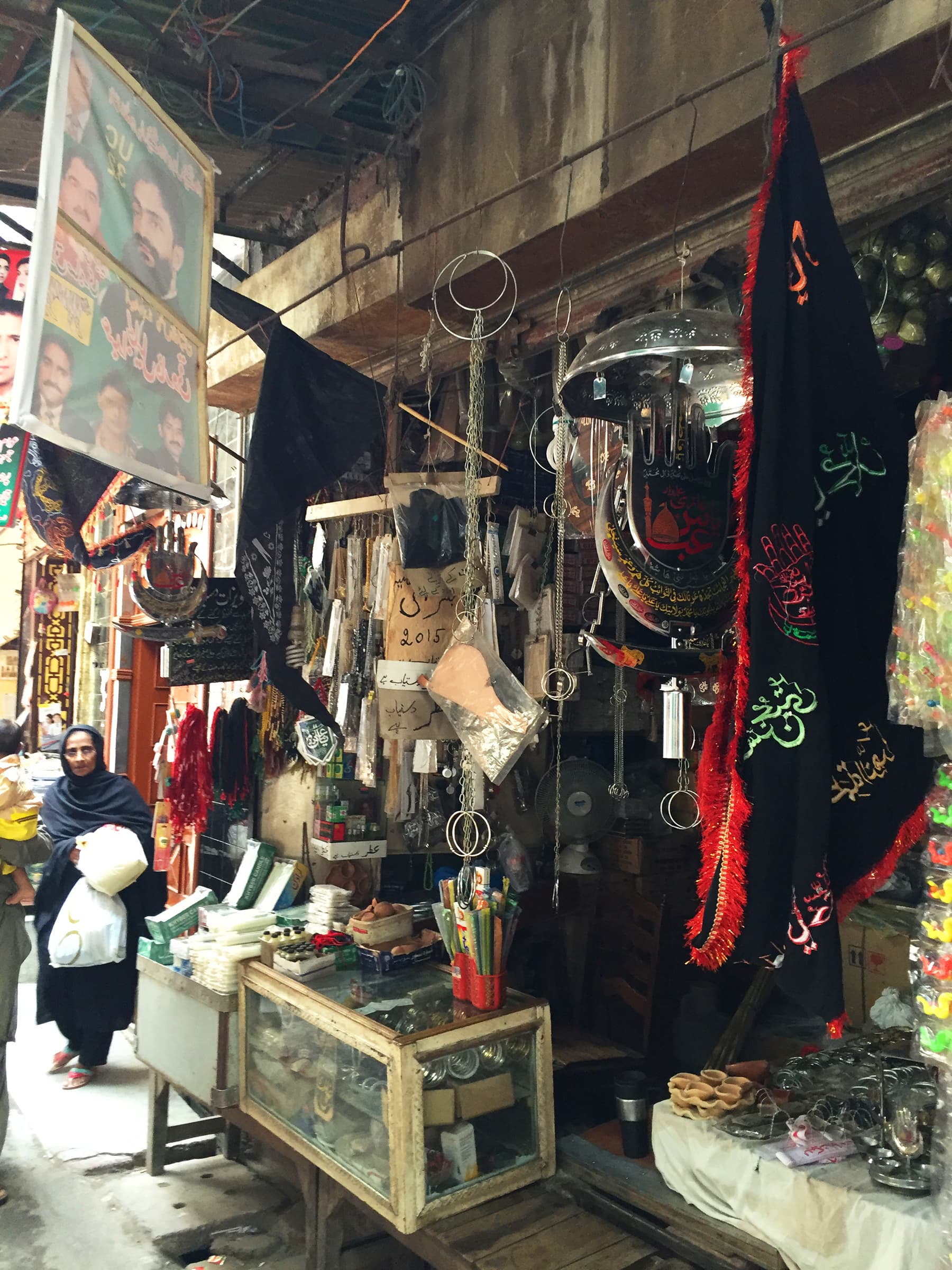
Stalls with 'alams' and relics for Moharram processions. —Taimur Shamil
Tahir Malik, my friend and a senior journalist had grown up in the walled city, and offered to show me all the renowned imambargahs, including Mubarak haveli and Nisar haveli, both of which are located in the same 'Mohallah Shia’an Kashmirian'.
Walking through narrow alleyways, we approached Mubarak haveli's large, wooden and green front gate, from where, a tapered corridor with whitewashed brick walls led us to the inner courtyard.
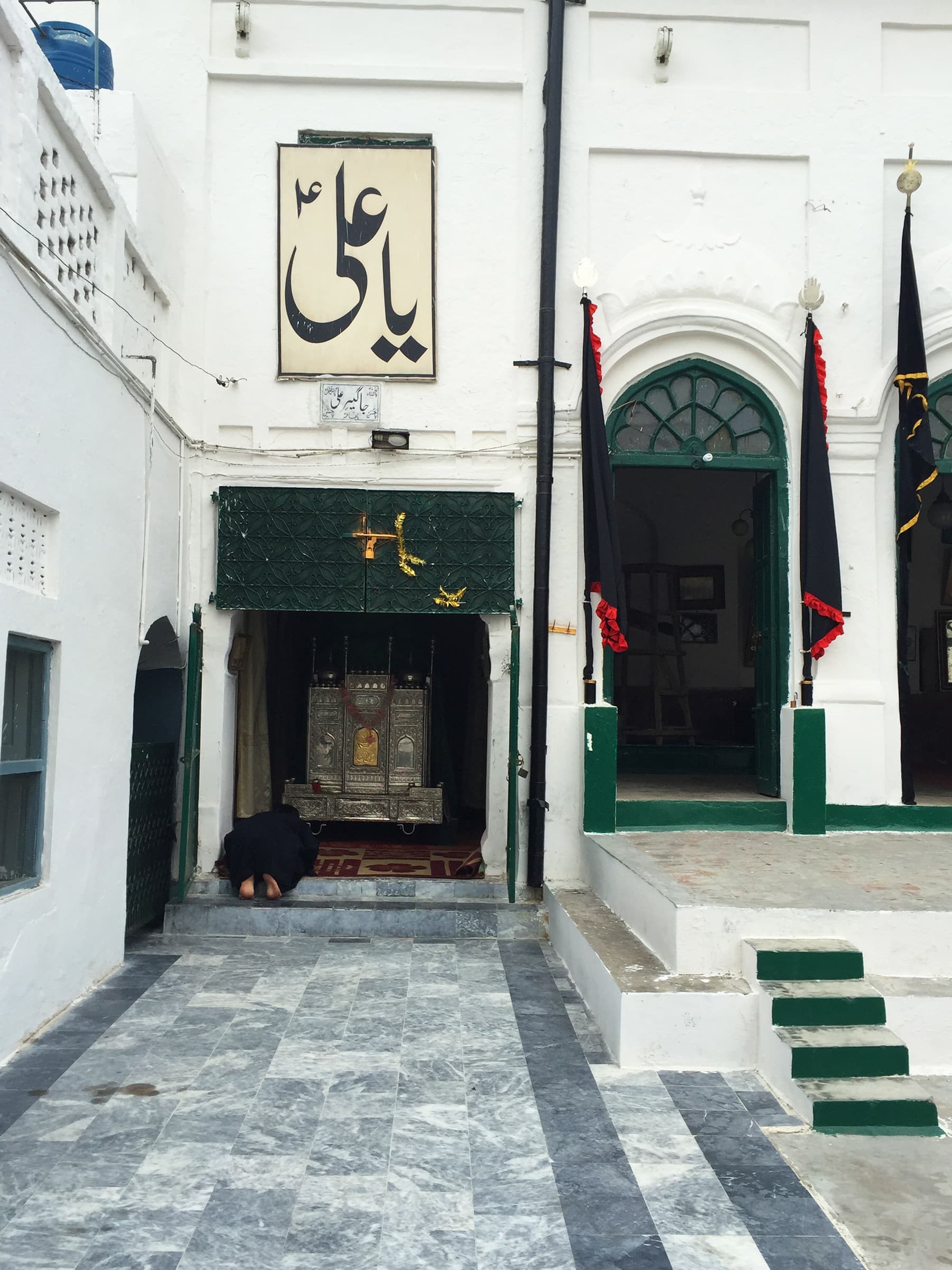
Inside Mubarak 'haveli' imambargah. —Taimur Shamil
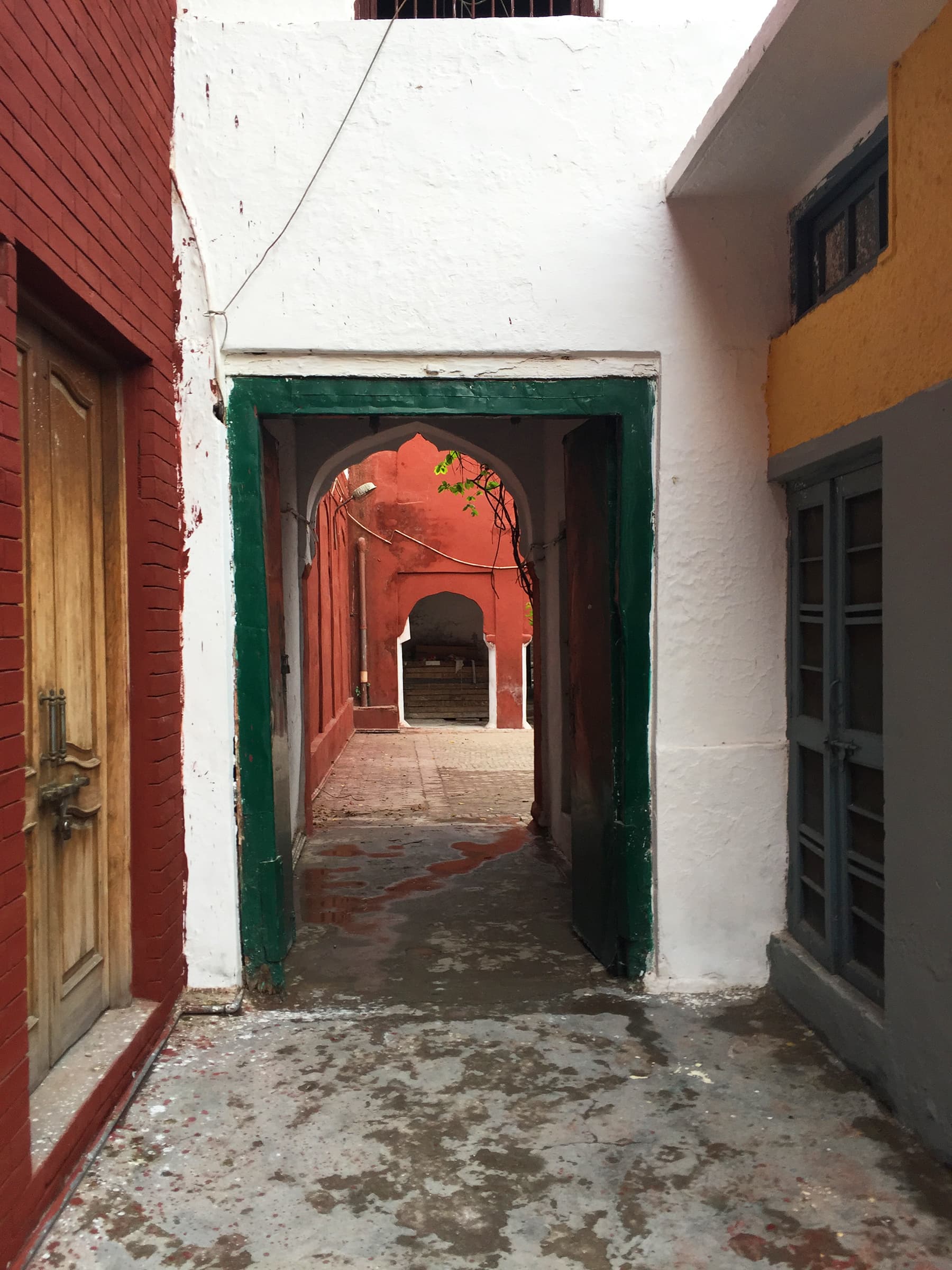
The passage way leading to the courtyard in Mubarak 'haveli'. —Taimur Shamil

Mubarik 'haveli' Imambargah. —Photo by Abdullah Khan

The minaret of the Mubarik haveli from the courtyard. —Photo by Abdullah Khan
TAIMUR SHAMIL — UPDATED ABOUT 19 HOURS AGO
Lahore, one of the most flamboyant and pulsating cities of Pakistan, hosts a few iconic buildings of Shia Islam. Nestled in the midst of the walled city's network of narrow and bustling streets are the old and distinctive imambargahs: Nisar haveli, Mubarak haveli and Maatam Siraai.
In search of these imambargahs, I entered the vibrant and crowded street of Mochi gate, leading to 'Mohallah Shia’an Kashmirian'. The area is known for its imambargahs and Shia community and culture.
The streets are lined with shops displaying alams and shabeehs (pictures) of Shia Imams. Dressed in black, men, women and children can be seen going to these many imambargahs and places for majalis.
The clanging of big sabeel cauldrons is heard at every corner, where flavoured milk and sherbets are served round the clock. These sabeels are decorated with flowers and alams to mark the occasion.

Mochi gate entrance. —Taimur Shamil

Balconies with wooden work in Mohalla Shian Kashmirian. —Photo by Abdullah Khan

Stalls with 'alams' and relics for Moharram processions. —Taimur Shamil
Tahir Malik, my friend and a senior journalist had grown up in the walled city, and offered to show me all the renowned imambargahs, including Mubarak haveli and Nisar haveli, both of which are located in the same 'Mohallah Shia’an Kashmirian'.
Walking through narrow alleyways, we approached Mubarak haveli's large, wooden and green front gate, from where, a tapered corridor with whitewashed brick walls led us to the inner courtyard.

Inside Mubarak 'haveli' imambargah. —Taimur Shamil

The passage way leading to the courtyard in Mubarak 'haveli'. —Taimur Shamil

Mubarik 'haveli' Imambargah. —Photo by Abdullah Khan

The minaret of the Mubarik haveli from the courtyard. —Photo by Abdullah Khan

